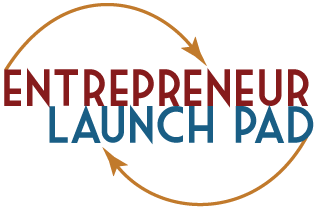 John Childs, Small Business Marketing Consultant for 20 years, presented to the Sandy ELP meeting 9/23/2011.
John Childs, Small Business Marketing Consultant for 20 years, presented to the Sandy ELP meeting 9/23/2011.
Manage Time Proactively
How do we become proactive in managing our time so that we don’t miss appointments, deadlines, or just being ready to move forward as scheduled? Most of us put appointments in our day-timers, but don’t schedule time for each to-do on our lists—if we have lists. Do we have an effective way to keep track of our networking efforts, or do we forget to follow-up in a timely manner? The proactive person creates and controls their actions. The reactive person is responding to reminders from people that he/she missed seeing after promising to do so.
To be a proactive, productive entrepreneur, 33% of our time, resources, and money needs to be spent planning for our business. There are four core areas of organization: Contacts and Communications, and Resources and Actions. The first two and last two are grouped on purpose. They work together.
Use Electronic Tools to Be Effective
The criteria for proactive resources include:
1. Multimedia Devices– choose tools that work on multiple devices: PC, Notebook, Laptop, Phone, etc.
2. Cloud Based—All your information needs to be stored in the Cloud (the internet). That way it’s always accessible by any device. Information includes documents, emails, task lists, calendar, projects, pictures, etc.
3. Getting Things Done—Use lists: phone call list, action list, next day to do list, priority list, etc. Your brain is not able to hold on to every to-do item, idea, or key elements of many projects. Using organizing lists allows you to process much more efficiently. The Art of Stress Free Productivity by David Allen spells this out in more detail.
4. Find Cheap or Free Tools—
Use Google Apps for Business: Calendars, documents, word sheets, folders, email; all sharable, all online. You can put the same item in 2-3 different labeled folders. To keep important folders at the top of the list, label them like this: @Next Action, @Waiting For.
You can move email to Google Documents. Just put a hash tag in front of it like this: #Therapeutic-20110923-email about brochure (Therapeutic is the client name, 20110923 is the date in a format that keeps years separate, and the note is the title of the email). Using the # hash tag allows you to make the document sharable. You can have 3 or more people working on it at the same time, and they can see changes made by all parties in real time.
The calendar function allows you to sync with your team. Any post to your calendar can be seen by your team on their calendars. It works for all members of the project team when you set it up.
Use Toodedo.com for a task list manager—
This function is available on all electronic devices. You can get organized. Write things down to remember them—phone calls, simple tasks, requests, to-do’s.
All you care about in tasks is…what’s the next action? For example: Task: Give away a desk. Actions: Take picture of desk, write ad for KSL, place ad on KSL; write ad for Craigslist, place ad on Craigslist
Schedule your projects. Organized them in context: Phone calls, Errands, Home projects. You have to train yourself to look at and scheduled your to-do list for the next week. You can set up reminders that integrate with the Google calendar function.
Use Evernote to type in conversations, take screen shots of whiteboard drawings, scan docs, and pull clips off of websites.
Remember, “If you change nothing, nothing will change.”
